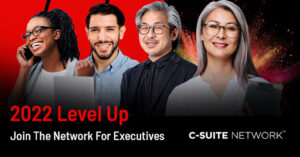
A Riddle
I can be your most powerful ambassador
and an efficient way to attract your ideal audience,
but I am often skeletal and without heart.
I’m a touch point for your customers,
accessible 24/7 across all time zones,
but you cannot know when I will be seen.
I’m used to vet board members, job candidates and vendors.
I am both the most used – and most ignored – part of your personal brand.
What am I?
Ponder this riddle for a bit, and we’ll come back to it…
Successful corporate brands are using Customer Experience (CX) experts to help them understand how customers are responding to each touch point along their Customer’s Journey. To explore how the discipline of Customer Experience might apply to personal brands, I asked for input from a fellow member of the National Speakers Association, Dan Gingiss, who teaches his clients and audiences how to create remarkable experiences that become their best sales and marketing strategy.

Dan shared with me that the discipline of Customer Experience explores how customers feel about every interaction with the brand. The Customer Journey, he explained, starts well before purchase and continues beyond the lifetime of the product. With each interaction or touch point with the brand, the customer’s opinion of the brand may either be reinforced or adjusted positively or negatively.
How can we apply that to our personal brand? A key concept from Customer Experience is that everything counts – every touch point with the brand shapes our opinion of the brand.
Most of us understand that how we dress for business (yes, even when we’re just seeing people on Zoom) is part of our personal brand, as is how we appear in our online meetings. Our offices and virtual backgrounds are also part of our brand because they are part of how we appear when we attend a virtual meeting. We can plan for how we show up in these business settings.
We understand that what we say and how we act at a meeting or in an office setting is part of our brand, as is anything we have published.
But we often forget that a huge part of what others consider to be an important part of our personal brand is something we seldom pay any attention to. Yes, you’ve probably guessed that the answer to my riddle is your LinkedIn profile.

In my one-on-work consultation with senior leaders, it’s not uncommon to hear comments from clients like:
“Well, if I had known that they were going to be looking at my profile, I would have polished it up.”
“Oh, I set it up X years ago and haven’t looked at it since.”
“Why is that skill in my profile? I’ve never used that skill!”
“Our company just bid on our biggest project ever and noticed that each of our leaders’ LinkedIn profiles were visited by the other company. We were all embarrassed that our profiles are out of date.”
Why are we surprised that people making judgments about us by looking at our LinkedIn profile? It is a touch point that is accessible 24/7 and ranks highly when our name is searched on Google. People assume it is up to date and a fair representation of who we are. And yet, very often, it is neither.
Here’s a challenge:
Today, read through your LinkedIn profile from top to bottom as though you are learning about a stranger, and ponder these questions:
1. What did you learn about this person?
2. How does their profile make you feel about them?
3. From your reading, can you determine their purpose, business passion and principles?
4. Does this person seem like someone with whom you’d like to do business?
If the feeling you had about this stranger was not strongly positive, it’s time for a serious overhaul of your brand online. If you are a C-suite executive or senior leader who would like to improve your online personal brand, LinkedIn profile, and presence, I can make it easy for you. Based on my knowledge of how LinkedIn works and how people respond to what they see there, I can ensure everything is ready and your profile conveys exactly the message and impression you’re aiming for. Let me help you attract the talent you want to hire, increase your visibility and influence, and steer your career. Contact me through my website: www.carolkaemmerer.com or profile: www.linkedin.com/in/carolkaemmerer.
To your success!
About Carol Kaemmerer: Named one of six top branding experts in 2022 by The American Reporter, I’ve helped countless C-level clients over the past ten years to use LinkedIn to frame conversations, impress customers, and introduce themselves before their first conversation takes place.
Contact me through my website https://carolkaemmerer.com for:
• Executive one-on-one assistance with your online brand
• Professional speaking engagements on personal brand and LinkedIn
• An autographed copy of my book, LinkedIn for the Savvy Executive-2ndEdition
• My self-paced, online course
• To receive my articles in your email mailbox monthly
My award-winning book, LinkedIn for the Savvy Executive-2nd Edition received BookAuthority’s “Best LinkedIn Books of All Time” award, was named one of the “Top 100+ Best Business Books” by The C-Suite Network, and is an International Book Awards winner. For your author-inscribed and signed book or for quantity discounts, order at: https://carolkaemmerer.com/books


 Named one of six top branding experts in 2022 by The American Reporter, over the past ten years, I’ve helped countless C-level clients use LinkedIn to frame conversations, impress suitors and customers, and introduce themselves before their first conversation takes place. If you are a C-suite executive or senior leader, I can make this easy for you. Based on my knowledge of how LinkedIn works and how people respond to what they see there, I can ensure everything is ready and your profile conveys exactly the message and impression you’re aiming for. Let me help you attract the talent you want to hire, increase your visibility and influence, and steer your career.
Named one of six top branding experts in 2022 by The American Reporter, over the past ten years, I’ve helped countless C-level clients use LinkedIn to frame conversations, impress suitors and customers, and introduce themselves before their first conversation takes place. If you are a C-suite executive or senior leader, I can make this easy for you. Based on my knowledge of how LinkedIn works and how people respond to what they see there, I can ensure everything is ready and your profile conveys exactly the message and impression you’re aiming for. Let me help you attract the talent you want to hire, increase your visibility and influence, and steer your career.


 I bring to my efforts world-class marketing communications experience for a Fortune 500 company, deep understanding of the LinkedIn platform (I literally wrote the book on the expression of executive brand on LinkedIn), experience working with an elite clientele, and interviewing and listening skills.
I bring to my efforts world-class marketing communications experience for a Fortune 500 company, deep understanding of the LinkedIn platform (I literally wrote the book on the expression of executive brand on LinkedIn), experience working with an elite clientele, and interviewing and listening skills. LinkedIn for the Savvy Executive-2nd Edition received BookAuthority’s “Best LinkedIn Books of All Time” award, and is a featured selection of the C-Suite Book Club. For your author-inscribed and signed book or quantity discounts, order at:
LinkedIn for the Savvy Executive-2nd Edition received BookAuthority’s “Best LinkedIn Books of All Time” award, and is a featured selection of the C-Suite Book Club. For your author-inscribed and signed book or quantity discounts, order at: 





